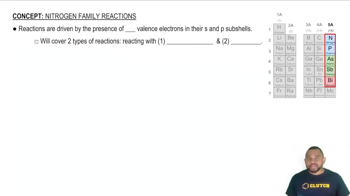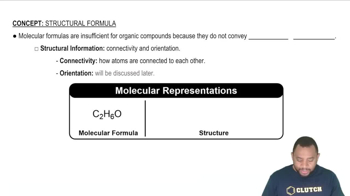Provide the name or chemical formula, as appropriate, for each of the following acids: (f) CH3COOH.
The oxides of nitrogen are very important components in urban air pollution. Name each of the following compounds: (a) N2O (b) NO (c) NO2 (d) N2O5 (e) N2O4.
 Verified step by step guidance
Verified step by step guidanceKey Concepts
Nomenclature of Inorganic Compounds

Oxides of Nitrogen

Chemical Formulas and Molecular Structure

Give the name or chemical formula, as appropriate, for each of the following binary molecular substances: (c) XeO3 (d) dinitrogen tetroxide (e) hydrogen cyanide
Give the name or chemical formula, as appropriate, for each of the following binary molecular substances: (f) tetraphosphorus hexasulfide.
Write the chemical formula for each substance mentioned in the following word descriptions (use the front inside cover to find the symbols for the elements you do not know). (b) On treatment with hydrofluoric acid, silicon dioxide forms silicon tetrafluoride and water. (use the front inside cover to find the symbols for the elements you do not know). (c) Sulfur dioxide reacts with water to form sulfurous acid. (use the front inside cover to find the symbols for the elements you do not know). (d) The substance phosphorus trihydride, commonly called phosphine, is a toxic gas. (e) Perchloric acid reacts with cadmium to form cadmium(II) perchlorate.
Assume that you encounter the following sentences in your reading. What is the chemical formula for each substance mentioned? (c) Hydrogen cyanide is a very poisonous gas.
a. What elements are contained in hydrocarbons?
